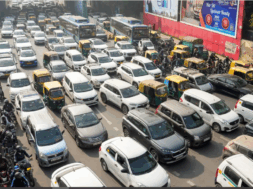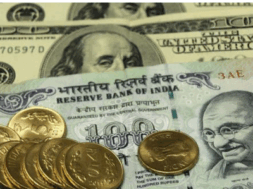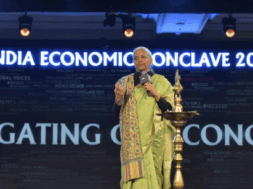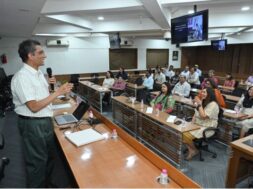
Roving Periscope: With SAARC defunct and BIMSTEC weakened, India battles against ‘frenemies’
Virendra Pandit
New Delhi: The common thread that now networks most member-states of the so-called South Asian Association for Regional Cooperation (SAARC) is their anti-India stance. They also know that New Delhi could be blackmailed to cough up financial and other assistance lest it lose whatever goodwill remains.
Founded with much fanfare in 1985 with Kathmandu (Nepal) as its headquarters, this intergovernmental organization sought to promote regional integration and economic development in South Asia. Its founding members were Bangladesh, Bhutan, India, Maldives, Nepal, Pakistan, and Sri Lanka. Afghanistan joined in 2007.
Since 2015, however, it has remained almost defunct after India refused to attend the SAARC Summit under Pakistan’s chair after Islamabad-sponsored terrorist attacks.
With the SAARC almost buried, and to follow its ongoing “Look East” foreign policy, India currently tries to cooperate with its eastern neighbors through another outfit, the Bay of Bengal Initiative for Multi-Sectoral Technical and Economic Cooperation (BIMSTEC), founded in 1997, whose members are Bangladesh, Bhutan, India, Myanmar, Thailand, Nepal, and Sri Lanka.
As a rising India emerges as the world’s third-largest economy in the next few years, how many of these members can New Delhi count as ‘friends?’ When they needed, India has helped almost all of them. But, in this era of ideology-freed cut-throat competition, and ungrateful frenemies, hardly any of them has returned the favor.
On the contrary, many of these countries have, at one time or another, gone not only anti-India but also joined New Delhi’s enemies.
Both China and the US are following the same policy to check the geopolitical rise of India through their proxies. They are debt-trapping India’s smaller neighbors, bankrupting and pushing them into a desirable regime change. This has led to the pauperization of these weak democracies and turned them into pliable dictatorships.
Now, with pro-China Marxist Anura Kumara Dissanayake’s swearing-in as Sri Lanka’s new President this week, India will have a new challenge to handle in its neighborhood.
Under Sheikh Hasina’s leadership, Bangladesh was one of the few stable partners for India in the neighborhood, besides Sri Lanka and Bhutan. The Dissanayake regime, under China’s renewed influence, may soon throw a spanner in New Delhi’s South Asia and ‘Look East’ policies.
Already locked in a contest with long-time strategic rivals like China and Pakistan, Dissanayake’s victory in Sri Lanka and Hasina’s exit in Bangladesh leaves New Delhi facing an array of governments in the region that either do not align with its interests, or have leaders at the helm who have been known for pro-China leanings, or are grappling with severe internal challenges, the media reported.
Already, Dissanayake has indicated ambivalence towards the implementation of the 13th Amendment of the Sri Lankan Constitution, which grants powers to the Tamil minority — New Delhi’s long-standing demand. Also, his political outfit, the Janatha Vimukthi Peramuna (JVP), has historically opposed the 1987 India-Sri Lanka Accord.
The JVP has a history of both anti-India and pro-China positions. Its founder, the late Rohana Wijeweera, criticized the alleged “Indian expansionism” in the 1980s and even portrayed India as an “enemy” of Sri Lankan interests.
Dissanayake also resisted calls for inquiries into alleged war crimes during the civil conflict involving the Liberation Tigers of Tamil Eelam (LTTE) and Sri Lankan forces. Recently, he announced plans to cancel a 450 MW wind power project led by Gautam Adani’s Adani Group.
In Bangladesh, where the traditionally anti-India Jamaat-e-Islami now controls the post-Hasina regime since August, the pro-US Muhammed Yunus-led government may throw the once-promising country back into its original fold—East Pakistan.
Since January 2024, the Bangladesh Nationalist Party (BNP), led by Khaleda Zia, intensified its anti-India rhetoric. Its “India Out” campaign, which included a boycott of Indian goods during Ramadan in April, highlighted the growing anti-India narrative. This party did not participate in elections earlier this year but, after the anti-Hasina coup, now calls the shots in Dhaka. The BNP and Jamaat-e-Islami played a key role in turning the student-led movement in early July into a nationwide agitation for Hasina’s ouster.
India will now have to be careful about how the new governments in Dhaka and Colombo balance their relationships with New Delhi and Beijing.
In the Maldives, the pro-China Mohamed Muizzu won the presidency in September 2023 after campaigning on an “India Out” platform. Soon thereafter, his ministers’ anti-India boasts plummetted Indian tourist inflow into the Maldives, and their bilateral relations nosedived.
In May 2024, he started replacing India as a security partner and expelled Indian military personnel who were operating aircraft in the Maldives. Following negotiations, the Indian troops were replaced by civilians. He also refused to renew a hydrographic agreement with India but permitted Chinese research vessels to dock at Maldivian ports, despite New Delhi’s concerns.
Unlike his predecessors, who traditionally visited New Delhi after assuming office, Muizzu visited Türkiye first, and then China. However, he attended Prime Minister Narendra Modi’s swearing-in ceremony in New Delhi on June 9.
Recently, the Maldives also announced that its free trade agreement with China would come into effect on January 1, 2025, with bilateral trade projected to increase to USD 1 billion following its implementation.
Even the new Nepalese Prime Minister, K P Sharma Oli, sworn in for the third time in July, has maintained a publicly anti-India stance in the past. During his first term in 2015, he prioritized strengthening ties with Beijing and signed agreements on trade and energy supply, while refusing to allow President B D Bhandari to visit India.
During his second term between 2018 and 2021, Oli not only mocked India’s national emblem but also attempted to redraw Nepal’s map to include Lipulekh, Kalapani, and Limpiyadhura, asserting that he would reclaim them “at any cost.”
Although Oli claimed in 2021 that all misunderstandings with New Delhi had been resolved, he reiterated in July 2024 that Lipulekh, Kalapani, and Limpiyadhura were part of Nepal.
Another neighbor, military junta-ruled Myanmar, has been mired in civil conflict since 2021. In February, citing security concerns due to insurgent groups along the border, India announced plans to build a fence along its 1,643-kilometre border with Myanmar.
Only last week, over 900 Christian Kuki terrorists, armed to the teeth, were reported to have infiltrated from Myanmar into Manipur. The Myanmar-born Rohingya Muslims, too, have been infiltrating India for a long time to change the demographies of many states.














